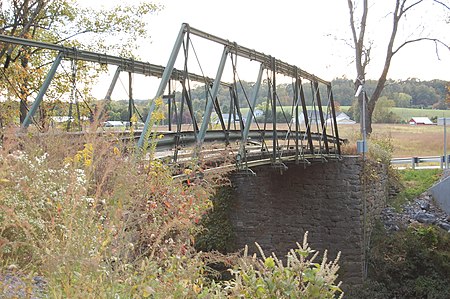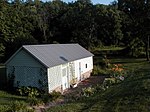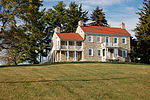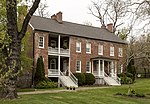Park's Gap Bridge
Berkeley County, West Virginia Registered Historic Place stubsBridges completed in 1892Buildings and structures in Berkeley County, West VirginiaNational Register of Historic Places in Berkeley County, West VirginiaRoad bridges on the National Register of Historic Places in West Virginia ... and 3 more
Southern United States bridge (structure) stubsWest Virginia building and structure stubsWest Virginia transportation stubs

Park's Gap Bridge is a historic Howe Truss bridge located near Martinsburg, at Tomahawk, Berkeley County, West Virginia. It was built in 1892, and has a span 93 feet (28 m) long and 12 feet (3.7 m) wide over Back Creek. It is a simple span pony truss supported on stone abutments.It was listed on the National Register of Historic Places in 1994.
Excerpt from the Wikipedia article Park's Gap Bridge (License: CC BY-SA 3.0, Authors, Images).Park's Gap Bridge
Dry Run Road,
Geographical coordinates (GPS) Address Nearby Places Show on map
Geographical coordinates (GPS)
| Latitude | Longitude |
|---|---|
| N 39.5125 ° | E -78.036388888889 ° |
Address
Dry Run Road
Dry Run Road
25427
West Virginia, United States
Open on Google Maps




